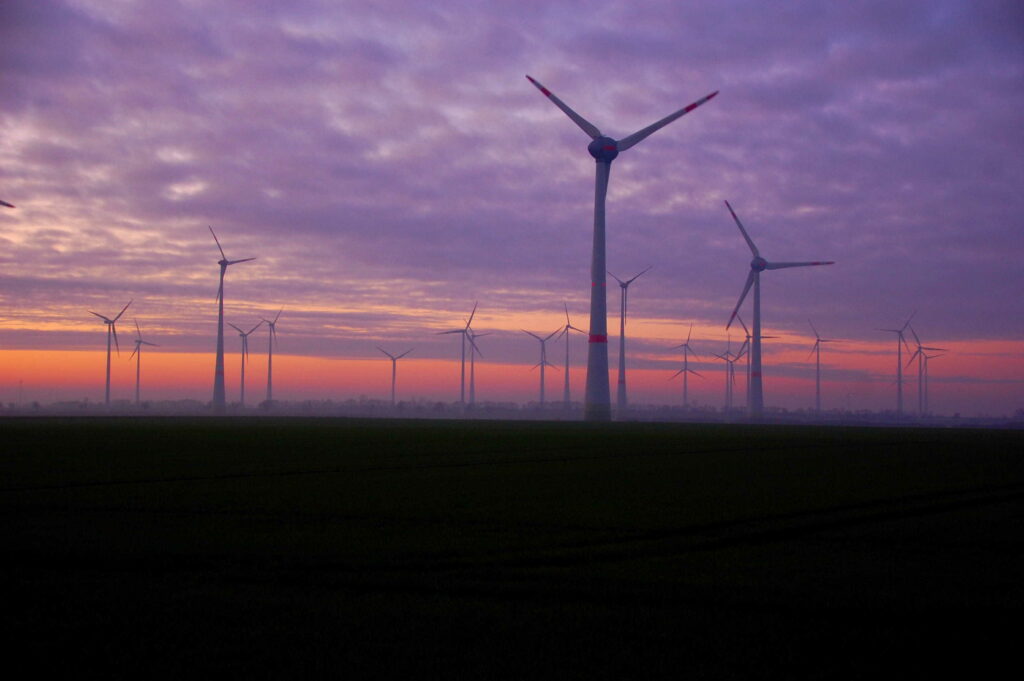High wind over the weekend sent power prices plunging as a surge in UK wind generation triggered negative prices for a record length of time, according to National Grid.
As Storm Atiyah approached the UK, officially hitting Cornwall at 9pm on Sunday, rising wind speeds led to a surge in wind power generation. In particular, throughout Saturday night, generation rose to nearly 50%. When it made landfall, wind speeds were up to 70mph.
On Saturday 7, wind power accounted for just over 40% of generation by 19:47, and by midnight had risen to just under 48% as output reached 13.95GW, according to Drax Electric Insights (DEI).
Wind generation continued to be strong throughout Sunday, as the country was increasingly buffeted as the storm moved towards land. On Sunday evening it hit a new record, generating 16.162GW according to the National Grid.
RenewableUK’s director of strategic communications Luke Clark called the record generation a “great early Christmas present”, saying it showed just how important wind power could be.
“On a dark cold Sunday when we need it most, wind was providing more than 40% of our power, far more than any other source of electricity. Wind energy is at the heart of our modern power system, enabling us to take practical action against dangerous climate change”.
This surge saw power prices fall into negative figures from roughly 10:45pm on Saturday evening till 12:45pm Sunday. Energy experts have called this ‘the future of energy’, as the abundance of generation coupled with low demand over night led to consumers around the UK to be paid for their power consumption.
Aggregator Kiwi Power’s Head of Optimisation, Thomas Jennings said: “The abundance of renewable energy saw imbalance prices tip into negative territory for the longest period in UK electricity market history, from 0:00 to 13:00, with prices falling as low as -£88/MWh. The case for smart, flexible solutions has never been higher.”
The negative pricing was welcomed by many, particularly those with smart meters and electric vehicles and thus able to charge them for free overnight thanks to the glut.
Duncan Burt, National Grid ESO’s director of operations took to Twitter to say “A big thank you to all those #EV drivers and smart cookies, including everyone on #OctopusAgile, who helped us balance the GB grid last night. Getting paid to use more power on a windy night!”
Numerous examples were shared on the social media site of people who had done their washing and charged their cars throughout the night, making use of the record low prices and helping to balance the grid.
Greg Jackson, the CEO of Octopus Energy, said that this weekend offered a glimpse of a future where a green electron is a cheap electron.
“At Octopus we are increasingly seeing those on our agile smart meter tariff tweak their daily routines to push their usage into these cheap, off-peak and renewable-heavy hours. This is one of the times when a large cohort of these customers came together and did something that benefits them, the national grid and the planet.
“We hope this happens even more as the green energy revolution takes off.”
Madeline Greenhalgh, policy and advocacy manager at Regen, mirrored this hope for the future energy system.
“This weekend was a short glimpse of how a smart, flexible system, when fully developed, will be able to respond to high periods of renewable generation, balance the system, and store that electricity for later use. An excellent example of how quickly we have adapted to the changing generation mix and a window into the future of system operation.”
A second milestone was hit off the back of this generation, with Day Ahead auctions cleared at negative prices for the first time in the UK. While this has happened in continental Europe before, in particular in Germany, this first for the country highlights how much renewable capacity has grown.
While many welcomed the milestones, there are lessons to be learnt too. Kiwi’s Jennings highlighted the benefit greater interconnection could have during such events.
“The market has long believed building interconnectors alongside renewable generation will lead to the Continental market as a whole balancing itself appropriately with clean energy. But high winds across North West Europe highlighted the urgent need for more energy storage capacity so that we can capture clean, cheap renewable generation when it is plentiful rather than letting it go to waste. This will allow us to store clean energy when prices are low and use this energy when the market is constrained and prices higher, as they were on Sunday evening.
“The ability to take advantage of these kind of price arbitrage opportunities and manage merchant risk is key to bringing forward more investment in energy storage projects.”
There seems no doubt that periods of high generation leading to negative prices could become increasingly common as wind generation grows in the UK.
As a world leader in offshore wind, it is already predicted to produce 10% of the country’s energy in 2020. While onshore wind, despite being one of the cheapest renewables solutions, has struggled in recent years due to government regulations, in 2017 it still produced 9% of the UK’s power needs. The technology features in many of the political parties’ manifestos, with Labour and the Green Party’s supporting it ahead of Thursday’s General Election.
An Energy UK spokesperson said: “The negative prices we saw this weekend are still a rare phenomenon – but one which might become more common in the future as more renewable generation comes on to the network.
“It underlines the importance of investing to enable a more modern and flexible energy system that is equipped for a very different generation mix from the one we have known and can make the most of these more diverse – and in some cases intermittent – sources of power.”






